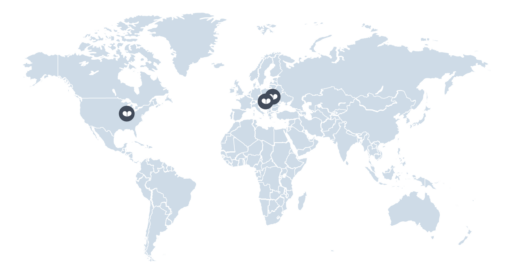
Ingenious Marketing Success Stories
Times are tough for sugar, with consumers becoming more and more health-conscious. However Haribo, the family-owned German sweets manufacturer, is still riding the wave of international growth. Haribo has subsidiaries in 22 countries across Europe and Asia, as well as in Australia and the US, with a turnover of over 2 billion per year (2013). What’s Haribo’s secret recipe to success? We went on the hunt.
Established in 1920 by Hans Riegel in Bonn, Germany, Haribo soon became a household name in post-war Germany when it came to non-chocolate sweets. The „Dancing Bear“, inspired by the historical fairground attraction, was replaced by the Gold Bear in 1960. During the following decades, the typical German „Mittelstand“ (Medium-size) company grew into a leading international provider of non-chocolate based sweets, with over 20 subsidiaries and a turnover of 2 billion a year, defying the negative trend in the industry. How? Here a couple of reasons.
The products: Dependable and innovative
Haribo’s range in Germany alone includes more than 200 products of various packaging sizes. The Gold Bear is the undisputed anchor in this range and more or less hasn’t changed since 1979. It was only in 2007 that an apple flavoured bear was permanently added to the 5 original flavours.
Liquorice snails and Maoam chewable sweets are also dependable centerpieces in the range, while many new products are created based on national preferences or in response to short-term trends. That’s how the brand is perceived as modern and up-to-date while also keeping the trusty classics in mind.
A matter of taste: strong localisation
Scandinavians love their liquorice variations, while more southern nations, even within Germany, prefer the fruity flavours. Smurfs, marshmallows or super-sour variations – Haribo’s subsidiaries enjoy a lot of freedom when it comes to their product innovations.
The best selling product lists per country often look wildly different – but always with the Gold Bear on top. Even the top-secret recipes of Haribo’s classics sometimes vary depending on the country. The same goes for marketing. Still, they all have the same aim – talking to those who are responsible for buying Haribo products, as well as their influencers, small and big.

New Ebook
Marketing Operations: The Ultimate A-Z Guide
Marketing Operations (MOps) is still in its infancy. That’s primarily due to every company being different, and there isn’t a standard structure that can be applied to every marketing model.
So, we’ve put together this short guide to illuminate what MOps is and how it should work in your company.
Classic marketing: fun and good ideas
Haribo keeps investing strongly in their advertising, blending long-term engagement with attention-grabbing short-term actions. They still hold the Guinness record for the longest-standing co-operation with a testimonial’ (24 years) with German talk-show legend Thomas Gottschalk, who was only recently replaced by colleague Bully Herbig.
In their English speaking commercials, Haribo hilariously summon the child within us all by lending kid’s voices to serious business people or ice hockey teams. All this while simultaneously adding spectacular promotions such as decorating whole planes with the Gold Bear or sponsoring motor rallys.
Social marketing & more: social, flexible and always ready to cooperate
Haribo is also very active in the vast field of social marketing. It starts with a tradition for locals around their German headquarters, where they offer to exchange collected chestnuts and acorns for Haribo products, in order to feed the local deer during winter. Their social media presences on Facebook, instagram and twitter are active and also localised, where they let their fans vote for new products or flavours or quickly react to whatever happens. For example, they quickly reacted to pop star Ellie Goulding’s tweet about not eating Haribo’s anymore because they weren’t vegetarian, with a personalised message written in vegetarian-friendly Haribo products, gaining a quarter of a million impressions.














